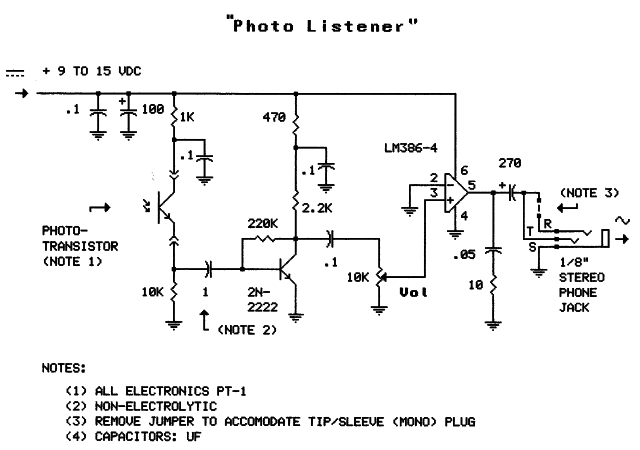This detector can be used as a snooping tool for listening to light sources. The detector/amplifier circuit is a window to a world of 'noises' that exist in the ambient light that surrounds us. Fluorescent light fixtures, TV sets, computer monitors and street lights all have a characteristic sound. Daylight has a white noise (what else) hiss. Strobe lights are especially interesting. By using this concentrator I can "copy" the click of strobe lights on communications towers 22 miles away in broad daylight, even though I can't see them! The incandescent obstruction light on a tower about 3 miles away has a slow "swoooshhhhh - swoooshhhhh - swoooshhhhh" sound. An airport beacon 2 miles away has its own characteristic sound. Lightning? Astronomical objects? What would the moon sound like? How about a meteor? Or a meteor shower? Give it a try, but don't point that thing at the sun!
The circuit, shown in Figure 1, employs a readily available phototransistor and audio amplifer IC.
Figure 1

Virtually any phototransistor should work in the circuit, including ones available at Radio Shack, where you can also pick up the LM386 audio amplifier. A better (cheaper) source is All Electronics, where all of the components for the circuit can probably be bought for under $10. The circuit is probably most easily constructed on a small piece of perfboard, which can then be installed in a plastic box. The output of the detector/amplifier can be connected to headphones, speakers, or the line input of a computer or recorder.
Schematics produced with DCCAD.